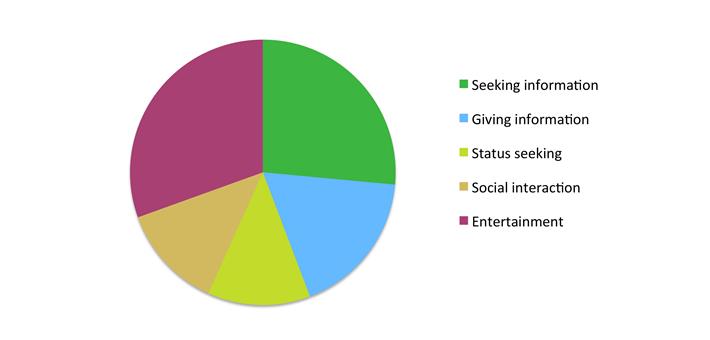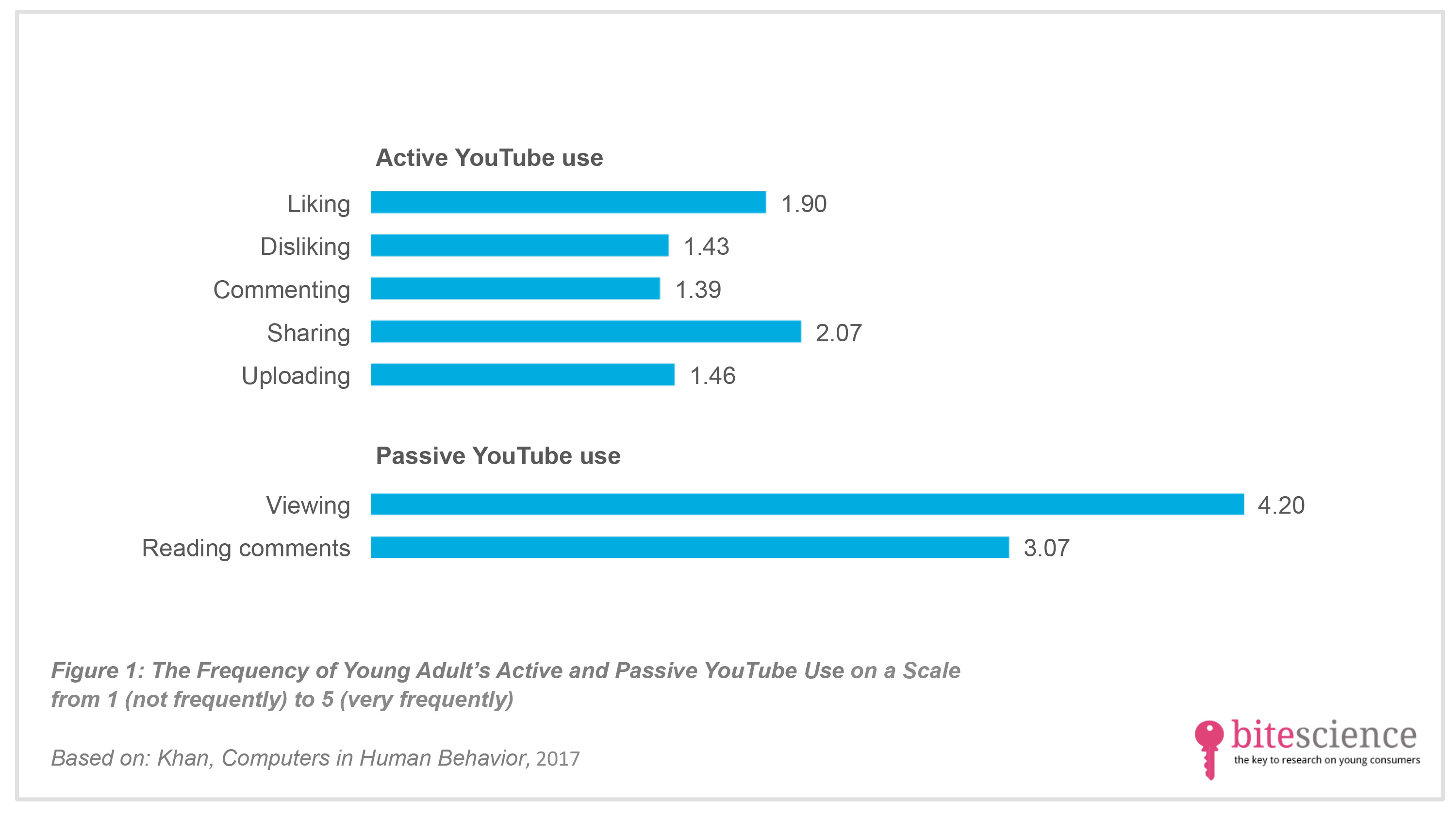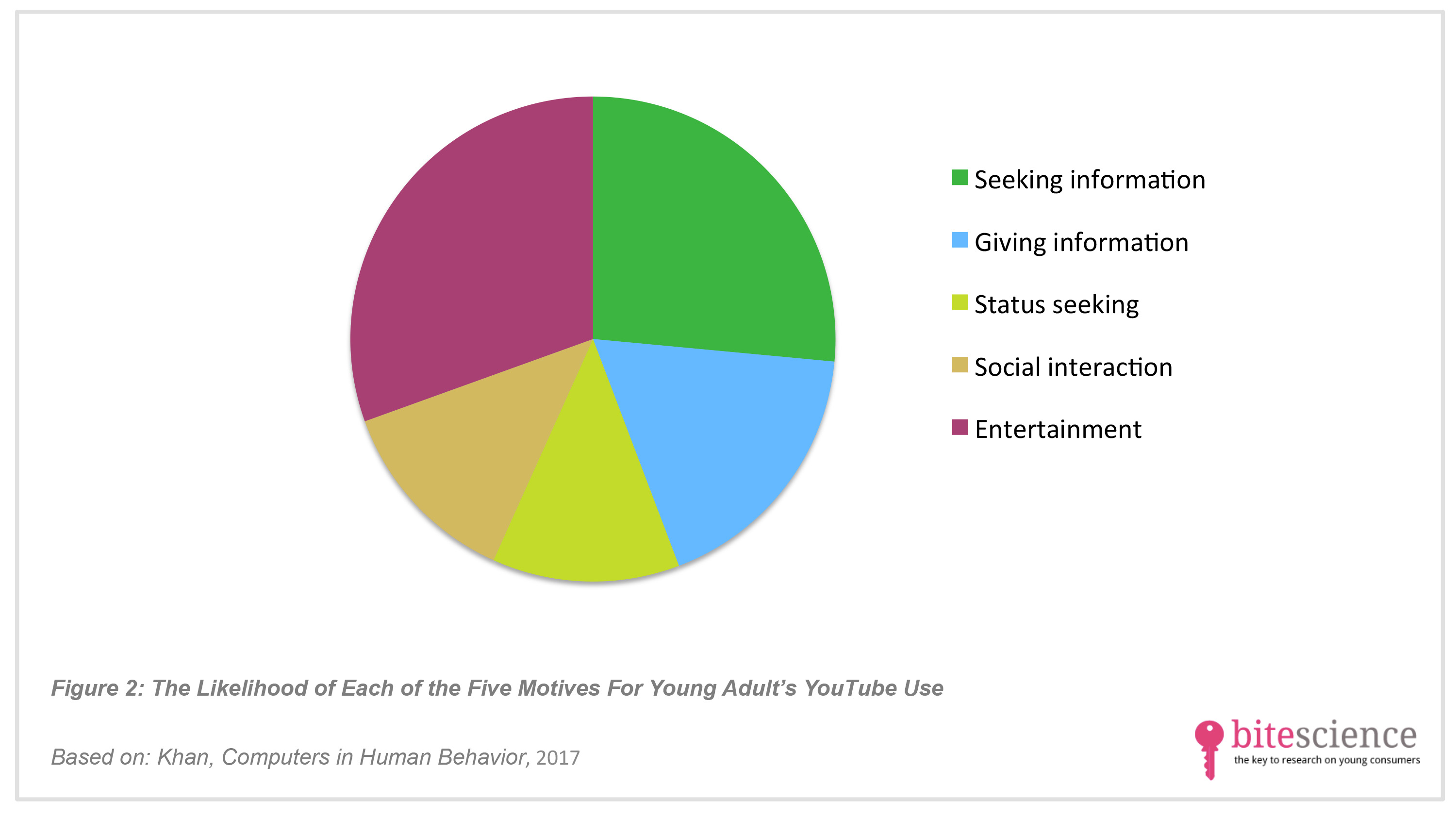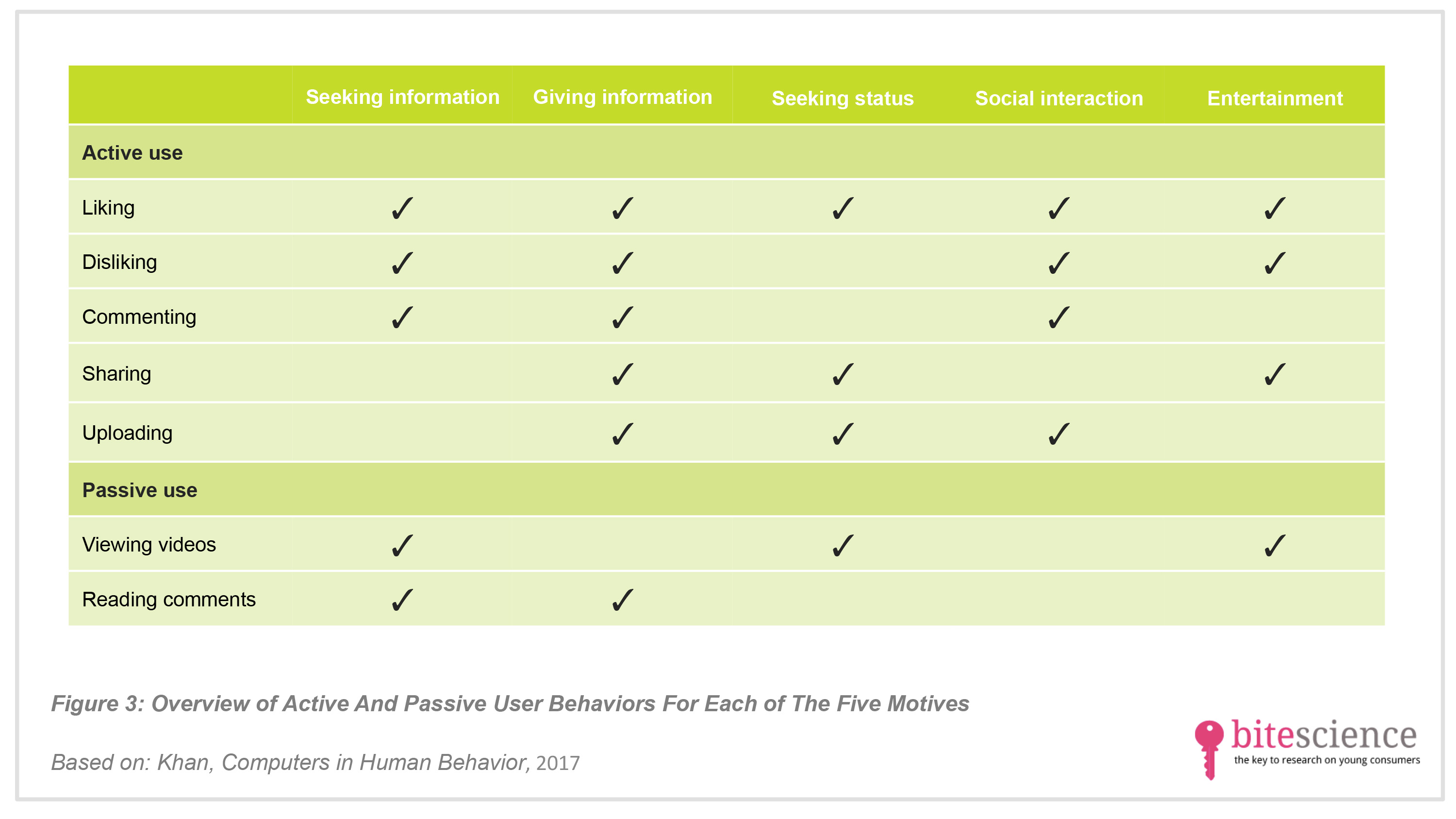
Five Motives For Young Adults’ Use of YouTube
YouTube is the go-to platform for young adults to watch music clips and learn things with “How-to” videos. Whereas some use YouTube mainly in a passive way, by viewing videos and reading comments, others engage more actively in the platform, for example by liking, commenting, and sharing. These various passive and active user behaviors are related to young adults’ motives to use YouTube, a study in Computers in Human Behavior shows.
Take aways
- Young adults have the following motives for using YouTube, ranging from most to least frequent:
- entertainment
- seeking information
- giving information
- social interaction
- seeking status
- These motives are related to the ways in which they use the platform (e.g., liking, viewing, and uploading videos). (See Figure 3 for an overview!)
- These insights can help companies and organizations in designing media campaigns (social or commercial) that target specific groups of young adults.
Study information
The question?
What motives do young adults have for using YouTube and how are these related to active (e.g., liking, commenting) and passive (i.e., viewing, reading comments) user behaviors?
Who?
1,143 young adults (mean age = 24 years old; 63% female; 80% was Caucasian, 9% Asian, 5% African American, 4.5% Hispanic, 1% Native American, and 0.5% mixed)
Where?
United States
How?
Young adults who had used YouTube in the past two months filled out a survey including questions about personal characteristics (gender, age, cultural background), active YouTube use (how often they engaged in liking, disliking, commenting, sharing, and uploading), and passive YouTube use (the frequency with which they viewed videos and read comments). They also answered questions about their reasons for using YouTube. These questions were grouped into five motives:
- seeking information (getting information on interesting stuff, learn how to do things, keep up with current events, and finding out what is new);
- giving information (generating ideas, providing information, and adding to an information pool);
- status seeking (impressing others, feel important, making oneself look cool, and feeling pressured);
- social interaction (stay in touch with others, meeting people, belonging to a community, and connecting with people with similar values);
- entertainment (being entertained, enjoy, play, having nothing better to do, relax, passing time).
Facts and findings
- Young adults reported more passive than active use of YouTube (Figure 1).
- They used YouTube most frequently to entertain themselves and least often to seek status (Figure 2).
- Young adults who used YouTube to seek information generally engaged in viewing videos, reading comments, liking, disliking, and commenting, but not in sharing and uploading.
- Those who had an information-giving motive typically read comments, liked, disliked, commented, shared, and uploaded, but did not view videos.
- Young adults who used YouTube to seek status generally viewed, liked, shared, and uploaded videos, but did not dislike, comment, and read comments.
- Those who had a motive for social interaction generally liked, disliked, commented, and uploaded, but did not view and share videos and read comments.
- Those who used YouTube for entertainment usually viewed videos, liked, disliked, and shared, but did not comment, upload, and read comments.
- See Figure 3 for an overview of the different active and passive user behaviors for each of the five motives.
- Young men more often disliked and commented on videos, and less often shared videos, than young women.
- Young adults who visited YouTube more often were less likely to like and comment, a phenomenon the researcher referred to as “social media fatigue”.
- Critical note: Young adults’ YouTube use was examined based on preexisting motives instead of asking them to come up with reasons for using the platform themselves. This means that the study could have overlooked potential reasons for young adults’ YouTube use.


